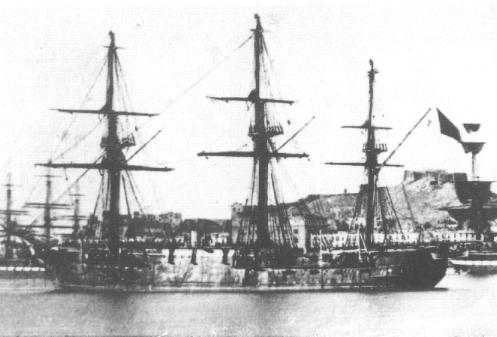
Méndez Núñez was a Spanish Navy wooden-hulled armored corvette, converted from the 38-gun screw frigate Resolución. Name at first Resolución when commissioned in 1862 she took part in the Chincha Islands War of 1865–1866 and action of 17 November 1865, bombardment of Valparaíso and Battle of Callao. Between Damage and her circumnavigation she had to be overhauled and repairs back in Spain, which prompted the Spanish Navy to convert her as an ironclad between 1867 and 1870, renamed Méndez Núñez when recommissioned. Captured by Cantonalist forces off Cartagena in the Rebellion of 1873—1874, she took part in the Battle of Portmán against loyalistsn in 1873, before falling back under its control after January 1874. She was disarmed in 1880 and decommissioned in 1886, stricken two years later and BU in 1896.
Design
As the Frigate Resolucion:
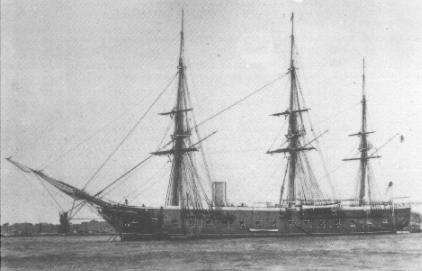
The Frigate Lelatad (“Loyalty”), lead ship of a class of three large frigates.
Resolución was a Lealtad-class screw, steam powered frigate with a wooden hull, three masts and bowsprit. The Lealtad class were part of the plan to transform Spain back into a 1st rank naval power, and they rivaled the best in the world, surpassing them in speed at a reasonable cost. The names referred to heroic cities, decisive battles in Spanish history, famous queens, religious devotions, or military virtues. Three ships were built, Lealtad, Triunfo and Resolución. The first was a bit lighter at 3075t standard.
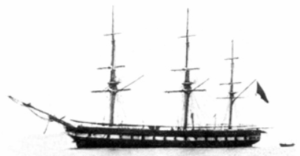 Resolución was the last ordered in this class of large 1st rank frigated, displacing 3,200 tons, for 70 metres (229 ft 8 in) long, 14 metres (45 ft 11 in) in beam, her hull being 7.33 metres (24 ft 1 in) tall overt the waterline, 6.16 metres (20 ft 3 in) in draft below. Her John Penn and Sons steam engine was rated for 500 horsepower (373 kW), enough to generate 1,900 indicated horsepower (1,417 kW). Top speed was 11 knots (20 km/h; 13 mph) on steam alone, and she carried 350 tons of coal for c1800 nm. Fully rigged on a barque, 4-stage plan, she was also about 10 kts under sails, range unlimited. Her armament comprised fifteen 68-pounder (31 kg) or 200 mm (7.9 in) smoothbore guns, twenty-six 32-pounder (14.5 kg) or 160 mm (6.3 in) guns plus two 150 mm (5.9 in) howitzers on deck, also coming with wheeled carriages for landing parties, disembarkation and boat use. Her crew amounted to 500 men.
Resolución was the last ordered in this class of large 1st rank frigated, displacing 3,200 tons, for 70 metres (229 ft 8 in) long, 14 metres (45 ft 11 in) in beam, her hull being 7.33 metres (24 ft 1 in) tall overt the waterline, 6.16 metres (20 ft 3 in) in draft below. Her John Penn and Sons steam engine was rated for 500 horsepower (373 kW), enough to generate 1,900 indicated horsepower (1,417 kW). Top speed was 11 knots (20 km/h; 13 mph) on steam alone, and she carried 350 tons of coal for c1800 nm. Fully rigged on a barque, 4-stage plan, she was also about 10 kts under sails, range unlimited. Her armament comprised fifteen 68-pounder (31 kg) or 200 mm (7.9 in) smoothbore guns, twenty-six 32-pounder (14.5 kg) or 160 mm (6.3 in) guns plus two 150 mm (5.9 in) howitzers on deck, also coming with wheeled carriages for landing parties, disembarkation and boat use. Her crew amounted to 500 men.
As a frigate she was her construction was authorized on 14 September 1859 as Nuestra Señora del Patrocinio, with her keel laid at the Reales Astilleros de Esteiro in Ferrol, Spain, on 22 September 1859. She was launched on 19 September 1861 and renamed Resolución, commissioned on 28 April 1862 at a cost of 3,661,741 pesetas. She started service from the summer of 1862, until her return to Spain in December 1866 after a long and active campaign.
Conversion:
The transformation into an ironclad was a way to cheaply, quickly obtain another of such vessels in service. The work still went over four years (1867-1870), more than her construction time of just a year a half (1861-62). It consisted of the installation of a continuous belt made of 120 mm (5 inches) wrought armor plating amidship, protecting the machine and tall enough to also protect her main battery, a classic Gloire type scheme. But the battery was renewed, with six large-caliber cannons housed, leaving the rest of the wooden hull unprotected. She was some sort of a mix between a broadside ironclad, since her guns were all pointing with limited arcs of fire, but a bit of central battery influence betwe the large caliber, modern, but few gun and limited, concentrated protection.
Being a 3000t ship, she was considered an armoured corvette, not a frigate. As stated in the introduction, the steam frigate Resolución badly needed an overhaul and repairs, and instead the Spanish Naval staff order her conversion instead, as since her departure, naval technology went through two revolutions. Her conversion was ordered on 13 February 1867, completed on 7 March 1870, when she was renamed Méndez Núñez on 21 August 1870.
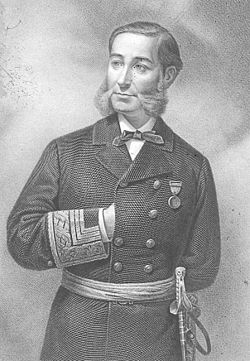 Her namesake for Contralmirante (Counter Admiral) Casto Méndez Núñez, who died a year earlier, on 21 August 1869. Casto Méndez Núñez (1824-1869) already had an illustrious career when he took command of the armored frigate Numancia, flagship of the Pacific Squadron in the war of the Pacific. During the Spanish-South American War between Spain and Bolivia, Chile, Ecuador, Peru (1864-1866), he led the Spanish fleet after Admiral Pareja’s suicide aboard Numancia. He bombarded Valparaíso, after a 4 days’ notice for evacuation, reduced the fortifications of Callao.
Her namesake for Contralmirante (Counter Admiral) Casto Méndez Núñez, who died a year earlier, on 21 August 1869. Casto Méndez Núñez (1824-1869) already had an illustrious career when he took command of the armored frigate Numancia, flagship of the Pacific Squadron in the war of the Pacific. During the Spanish-South American War between Spain and Bolivia, Chile, Ecuador, Peru (1864-1866), he led the Spanish fleet after Admiral Pareja’s suicide aboard Numancia. He bombarded Valparaíso, after a 4 days’ notice for evacuation, reduced the fortifications of Callao.
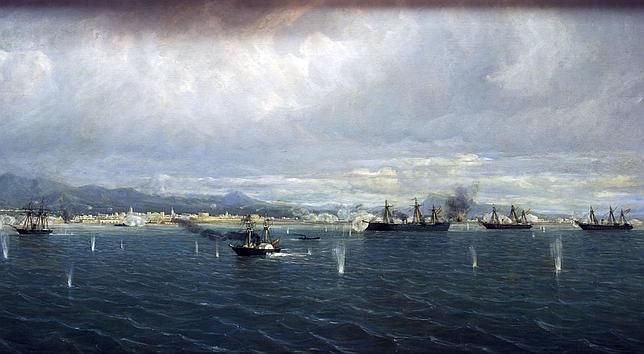
The bombardment of Callao
Resolución took a large part in these operations. Promoted to squadron commander on June 10, 1866 by Queen Isabella II and Grand Cross of Charles III he remained a loyalist in the Glorious Revolution, and was promoted to lieutenant general in October 1868 or vice admiral but refused and remained rear admiral.
Vice President of the Provisional Government Board of the Navy in 1868 and Vice President of the Admiralty, he died at 45, attributed to the after-effects of the wounds he received three years earlier at the Battle of Callao (or poisoned). He was later transferred to Pantheon of Illustrious Sailors of San Fernando in 1883. Several warships took his name later.
The frigate was converted and thus renamed Méndez Núñez. As an ironclad she was a but longer at 72.0 metres (236 ft 3 in) at the waterline, for a beam of almost a meter more, at 15 metres (49 ft 4 in) mean draft now deeper at 6.7 metres (21 ft 11 in). Her displacement rose to 3,382 long tons (3,436 t).
Powerplant:
Her single compound-expansion steam engine was fed by four boilers, producing 2,250 indicated horsepower (1,678 kW) (Other source: 500 nominal hp, 1449 indicated hp) still driving a single 2-bladed propeller, for a planned top speed of 8 knots (15 km/h; 9.2 mph), three knots less than as a Frigate. But on trials, she in fact never exceeded 6.5 knots (12.0 km/h; 7.5 mph) in normal operations, making her one of the slowest ironclads in service. Unfortunately, it seems her engine and boilers were overhauled but not changed for more modern ones. She had three masts, barque-rigged with some minor difference compared to her rigging as a frigate. But she could now carry 50t more coal at 400 long tons (410 t) but her range was probably not much improved.
Armament:
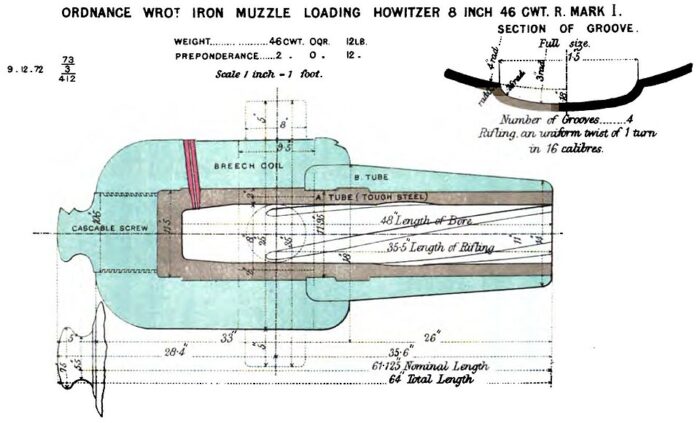
8-n Woolwich Howitzer
Méndez Núñez was a hybrid broadside/central battery ship, with all her armament concentrated amidships. This was a considerable difference with her pre-conversion armament, of 43 guns, now she was down to just six:
Four Armstrong 9-inch (229 mm) Woolwich rifled muzzle-loading guns.
Two 8-inch (203 mm) Woolwich rifled muzzle-loading guns aft of each 229 mm.
She had no chase nor bow guns on deck.
The Royal Navy returned to muzzle-loading rifled guns (Woolwich) as Armstrong improved the Royal Artillery works at Woolwich to produce breechloaders, but left office in 1863. The Woolwich Works started to manufacture RML guns but used Armstrong’s method of manufacturing the gun barrel with a shunt principle for rifling. They were ideal as they needed less training for the Spanish crews, accustomed to the latter and not breach-loaders.
The 8-in seems to be very recent, entering service in 1870. These original 46 cwt howitzer were rifled on the “Woolwich” pattern with 4 spiral grooves in which studs protruding from the projectile engaged to impart spin.
⚙ Sagunto specifications |
|
| Displacement | 7,352 t (7,236 long tons) |
| Dimensions | 89.5 x 17.3 x 8.4 m (293 ft 8 in x 56 ft 9 in x 28 ft) |
| Propulsion | 1 shaft, 2 compound-expansion steam engines 8 boilers 3,700 ihp (2,800 kW) |
| Speed | 12.5 knots (23.2 km/h; 14.4 mph) |
| Range | 2,400 nmi (4,400 km; 2,800 mi) at 10 knots, Unlimited with rig. |
| Armament | 8× 229 mm (9 in) RML, 3× 180 mm (7.1 in) RML |
| Protection | Belt: 150 mm (5.9 in), Battery: 150 mm (5.9 in) |
| Crew | 554 |
Career of Resolucion
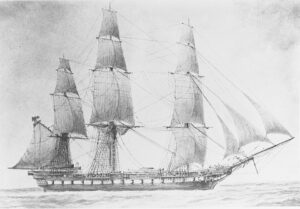 Resolución was assigned first to the Training Squadron, under Contralmirante Luis Hernández-Pinzón Álvarez until dissolved in June 1862. Resolución and Nuestra Señora del Triunfo were reassigned to the Pacific Squadron after a refit at the Arsenal de La Carraca at San Fernando to prepare them for the southeastern Pacific. Resolución and Triunfo left Cádiz on 10 August 1862 with Commander Pinzón aboard Resolución (flag) demonstrating Spanish presence in the rebellious Americas, complmenting a scientific research mission with three zoologists, a geologist, a botanist, an anthropologist, a taxidermist, and a photographer, stopping at the Canary Islands, Cape Verde, crossing to Brazil and entering Río de la Plata to meet the corvette Vencedora.
Resolución was assigned first to the Training Squadron, under Contralmirante Luis Hernández-Pinzón Álvarez until dissolved in June 1862. Resolución and Nuestra Señora del Triunfo were reassigned to the Pacific Squadron after a refit at the Arsenal de La Carraca at San Fernando to prepare them for the southeastern Pacific. Resolución and Triunfo left Cádiz on 10 August 1862 with Commander Pinzón aboard Resolución (flag) demonstrating Spanish presence in the rebellious Americas, complmenting a scientific research mission with three zoologists, a geologist, a botanist, an anthropologist, a taxidermist, and a photographer, stopping at the Canary Islands, Cape Verde, crossing to Brazil and entering Río de la Plata to meet the corvette Vencedora.
Later they were joined by the schooner Virgen de Covadonga and they left to Montevideo on 10 January 1863, Patagonia, Falkland Islands, rounded the Cape on 6 February to the Pacific via Chiloé Archipelago off Chile and continued to North America, stopping at San Francisco from 9 October to 1 November 1863 (The civil war was raging by then in the east). They sailed then to Valparaíso on 13 January 1864, trying to prevent the independence of Chile and Peru. In retaliation for hostile actions against Spanish citizens in Peru, Pinzón seized the Chincha Islands on 14 April 1864 and covered an operation to collect Spaniards on the steamer Heredia at Callao. Virgen de Covadonga towed her out of the harbor under Peruvian warships ready to open fire. War was nearly avoided. Pinzón resigned his command on 9 November as he felt he was unsupported. He was replaced by Vicealmirante José Manuel Pareja.
Nuestra Señora del Triunfo was destroyed by accidental fire on 25 November 1864 so on 30 December 1864 the screw frigates Berenguela, Reina Blanca, and Villa de Madrid joined in. On creman from Resolución was killed while on leave at Callao and Pareja settled affairs with Peru by signing the Vivanco–Pareja Treaty aboard Villa de Madrid (flag) with a representative but the Peruvian Congress refued ot. The Peruvian Civil War reupted in February 1865. By May 1865 Numancia and the transport Marqués de la Victoria arrived and this was the start of the Chincha Islands War in 1865 when Pareja went to Valparaíso to stop claims from Chile, that the latter refused to settle, followed by a blockade of Chilean ports, on 24 September. Resolución blockaded the Bay of Concepción and on 17 November a Chilean tug captured one of her boats. There were other setbacks and themajor defeat in the Battle of Papudo on 26 November (Esmeralda captured Virgen de Covadonga). Pareja commit suicide on 28 November.
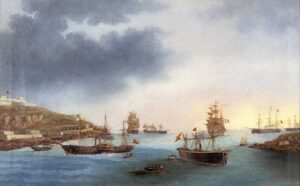 Numancia arrived to meet Villa de Madrid and Berenguela at Caldera on 12 December and Numancia′s CO, Contralmirante Casto Méndez Núñez, took charge of the Squadron that day, transferred his flag to Villa de Madrid. Her confered with officers and concentrated his squadron off Valparaíso, Resolución and Vencedora joined on 19 December. The blockade was limited to Valparaíso and Caldera, supplies coming from a new Spanish frigate, operations started to find and recapture Virgen de Covadonga in Juan Fernández Islands, Puerto Inglés, Chiloé Island. Peru and Ecuador joined the war with Chile’s side in January 1866 and by February-March 1866, Méndez Núñez with Reina Blanca and Villa de Madrid, then Numancia and Reina Blanca to destroy the combined Chilean-Peruvian squadron off Chile. Bolivia joined the war on 22 March and all Pacific ports were closed to the Spaniards. Madrid ordered a punitive action, Méndez Núñez selected Valparaíso and on 31 March arrived, with Numancia firing two warning shots. Then, Resolución, Reina Blanca, Villa de Madrid, Vencedora mclosed in and made a 3-hour bombardment. The paddle steamer Paquete de Maule guarded against Chilean merchant ships sorties. The result was 2 killes, 10 injured, 33 merchant ships sunk, the bulk of the Chilean merchant fleet.
Numancia arrived to meet Villa de Madrid and Berenguela at Caldera on 12 December and Numancia′s CO, Contralmirante Casto Méndez Núñez, took charge of the Squadron that day, transferred his flag to Villa de Madrid. Her confered with officers and concentrated his squadron off Valparaíso, Resolución and Vencedora joined on 19 December. The blockade was limited to Valparaíso and Caldera, supplies coming from a new Spanish frigate, operations started to find and recapture Virgen de Covadonga in Juan Fernández Islands, Puerto Inglés, Chiloé Island. Peru and Ecuador joined the war with Chile’s side in January 1866 and by February-March 1866, Méndez Núñez with Reina Blanca and Villa de Madrid, then Numancia and Reina Blanca to destroy the combined Chilean-Peruvian squadron off Chile. Bolivia joined the war on 22 March and all Pacific ports were closed to the Spaniards. Madrid ordered a punitive action, Méndez Núñez selected Valparaíso and on 31 March arrived, with Numancia firing two warning shots. Then, Resolución, Reina Blanca, Villa de Madrid, Vencedora mclosed in and made a 3-hour bombardment. The paddle steamer Paquete de Maule guarded against Chilean merchant ships sorties. The result was 2 killes, 10 injured, 33 merchant ships sunk, the bulk of the Chilean merchant fleet.
Méndez Núñez next sailed to Callao, Peru, divided the squadron into two divisions. Resolución was in the second with Villa de Madrid, Almansa, Paquete de Maule, three transport frigates. On 14 April they departed, arrived at San Lorenzo Island on 25 April, and Callao on 27 April. There were several days of negotiations. The frigates lowered their topmasts and main yards, altered their rigging to reduce fire damage, set up on-board field hospitals, painted over their hull white stripes with black paint to reduce visibility as the port was well defended.
On the morning of 2 May, the squadron ented Callao Bay, taking part in the Battle of Callao, largest battle of the Chincha Islands War. Resolución, Numancia, and Almansa bombarded the northern harbor sector. Resolución fired 1,304 rounds, was hit 19 times (3 killed, 11 wounded) but as ammunition ran low, the squadron ceased fire as dusk fell, fog formed in the harbor, but all defenses had been silenced.
Méndez Núñez’s squadron retired to San Lorenzo Island for repairs and care to the crew. The War ended in a ceasefire on 9 May. The following day the squadron left South American waters, divided, wit ships sailing to the Philippines, the others rounding the cape to Brazil, Villa de Madrid as flagship. Rounding the Cape in winter was detrimental to Resolución, loosing her rudder on 13 June 1866, adrift, anchored at Sea Lion Island (Falkands) on 22 June. The captain sent a boat at Port Stanley for assistance. The British steamer Spiteful sortied and towed Resolución to Port Stanley. The crew built a new rudder while the CO went on Spiteful to Montevideo and Rio de Janeiro to inform Méndez Núñez. The latter sent the paddle gunboat Colón to Port Stanley with spares. After repairs, Resolución keft with Colón on 10 September to Rio, arriving on 7 October and sailed for Spain on 29 October with the store ship Trinidad, arriving at Cartagena on the night of 31 December, fully repaired at the Arsenal from 1867.
Career of Méndez Núñez
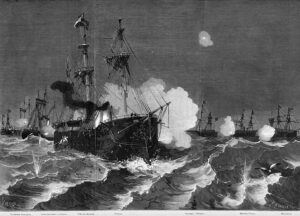 After conversion, “Méndez Núñez” entered service at Cartagena and by 1871 was assigned to the Mediterranean Squadron until late 1872, and transferred to the Reserve Squadron. When the Canton of Cartagena declared its independence from the republic on 12 July 1873 (Cantonal Rebellion), the central government set the fleet and land forces. Méndez Núñez was at the Arsenal de Cartagena base, under Cantonalist control. With Almansa and Vitoria she steamed to Almería to raise funds, but the city refused to pay, and the squadron they bombarded the city on 30 July, flying the red flag of the Canton. This was considered piracy, other naval powers remained loyal to the government and sent warships to Spanish waters. Vitoria and Almansa underway to Málaga, were intercepted by HMS Swiftsure and SMS Friedrich Carl, which detained them on 1 August, captured as pirates. On 8 August Méndez Núñez ran aground when trying to recapture them. The latter were returned to the Spanish Navy at Gibraltar on 26 September, under control of Miguel Lobo y Malagamba.
After conversion, “Méndez Núñez” entered service at Cartagena and by 1871 was assigned to the Mediterranean Squadron until late 1872, and transferred to the Reserve Squadron. When the Canton of Cartagena declared its independence from the republic on 12 July 1873 (Cantonal Rebellion), the central government set the fleet and land forces. Méndez Núñez was at the Arsenal de Cartagena base, under Cantonalist control. With Almansa and Vitoria she steamed to Almería to raise funds, but the city refused to pay, and the squadron they bombarded the city on 30 July, flying the red flag of the Canton. This was considered piracy, other naval powers remained loyal to the government and sent warships to Spanish waters. Vitoria and Almansa underway to Málaga, were intercepted by HMS Swiftsure and SMS Friedrich Carl, which detained them on 1 August, captured as pirates. On 8 August Méndez Núñez ran aground when trying to recapture them. The latter were returned to the Spanish Navy at Gibraltar on 26 September, under control of Miguel Lobo y Malagamba.
Méndez Núñez continued operation alone buy by mid-August she spotted and fired on the central government screw schooner Prosperidad until British RN ships intervened. They escorted Prosperidad to safety in international waters. On 17 September, Méndez Núñez with Numancia and Despertador del Cantón sent a landing at Águilas, again to obtain food and money. On 27 September, Méndez Núñez, Numancia, and Tetuán bombarded Alicante (little damage from the coastal artillery).
From Gibraltar departed the loyalist squadron (Vitoria, Almansa, Carmén and Navas de Tolosa, Colón and Ciudad de Cádiz, Diana, Prosperidad) for Cartagena on 5 October, which was knew on 9 October, to Cantonalist naval forces were organized by cavalry general, Juan Contreras y Román, with Méndez Núñez, Numancia, Tetuán, and Despertador del Cantón.
On 10 October the loyalists arrived and started a blockade. On 10 October, Lobo kept his ships off Escombreras but on 10–11 her raise sail and used a north wind to east of Portmán and instead of the red Cantonal flag, flew the Spanish flag to avoid international antipiracy actions. On 11 October she sailed in open sea but at 10:30 was escorted by five ships of the RN, one of the Imperial German Navy, one of the Regia Marina and French Navy. By 11:30, the two squadrons sighted one another 3 nautical miles south of Cape Agua. Lobo was off Cape Negreti, leading to the Battle of Portmán when his ships raised the red flag. Lobos turned to (flag Vitoria first) but Numancia was faster, charged Vitoria, and a duel started. Numancia cut the line and the melee engaged. Navas de Tolosa faced Tetuán and Méndez Núñez but the latter opened fire on Almansa and Vitoria at very long range, then closed with Carmen, scored hits, then came in assistance of Numancia, fleeing toward Cartagena, chased by Vitoria. Almansa, Carmen, and Navas de Tolosa went in chase of Méndez Núñez, firing on her at very long range. Méndez Núñez and Numancia reached Cartagena’s harbor, protected by coastal forts. The central government exhausted its ammunition and Lobo withdrew to the east. The Cantonalists lost 13 killed, 49 wounded (disputed).
The central government blockaded Cartagena until a sortie on 13 October 1873, but Vitoria had coal for two days and Méndez Nuñez ran aground while leaving, soon refloated. In formation they rpogressed but Lobo withdrew his squadron tod Gibraltar, expecting to receive reinforcement (Zaragoza and Ulloa) but ending the blockade. Her was later dismissed, replaced by Contralmirante Nicolás Chicarro. Méndez Núñez, Numancia, Despertador del Cantón sortied again on 17 October with several Cantonal leaders to Valencia and Barcelona. In a collision with Numancia Despertador del Cantón sank. Then Numancia and Méndez Núñez returned to Cartagena. On 18 October 1873 Chicarro took command of the central government, renewing the blockade of Cartagena on 23 October, but avoided combat. The Cantonal Rebellion collapsed and surrendered on 12 January 1874. Méndez Núñez was back under Spanish Navy control.
In 1880, Méndez Núñez returned in the Training Squadron under Contralmirante José Polo de Bernabé. Inspected, she was declared unfit for service, disarmed, and decommissioned by Royal Order of 4 June 1886, hulked as a prison ship in Cartagena until stricken in 1888. She was towed and anchored at Mahón on Menorca, Baleares and by March 1896 sold there for scrapping.
Read More/Src
Books
Greene, Jack & Massignani, Alessandro (1998). Ironclads at War: Origin and Development 1854–1891. Combined Publishing.
Lyon, Hugh (1979). “Spain”. In Gardiner, Robert (ed.). Conway’s All the World’s Fighting Ships 1860–1905. Conway Maritime Press.
de Saint Hubert, Christian (1984). “Early Spanish Steam Warships, Part II”. Warship International. XXI (1)
Silverstone, Paul H. (1984). Directory of the World’s Capital Ships. New York: Hippocrene Books.
Brassey, Thomas (1888). The Naval Annual 1887. Portsmouth, England: J. Griffin.
Adamson, Robert E. & de St. Hubert, Christian (1991). “Question 12/89”. Warship International. XXVIII (2): 199–205.
Almagro, Manuel de (1866). Breve descripción de los viajes hechos en América por la Comisión científica del Pacífico.
Blanco Núñez, , José María (2011). La construcción naval en Ferrol, 1726-2011. Navantia S.A.
Bordejé y Morencos, Fernando de (1995). Crónica de la Marina española en el siglo XIX, 1868-1898. MoD
Farcau, Bruce W. (2000). The Ten Cents War: Chile, Peru, and Bolivia in the War of the Pacific, 1879-1884. Praeger.
González, Marcelino (2009). 50 Barcos españoles (in Spanish). Gijón, Spain: Fundación Alvargonzález.
Greene, Jack & Massignani, Alessandro (1998). Ironclads at War: The Origin and Development of the Armored Warship, 1854–1891.
Jones, Colin (2011). “Battle at Valparaíso”. In Jordan, John (ed.). Warship 2011. London: Conway. pp. 94–101.
Lledó Calabuig, José. Del vapor de ruedas a la fragata acorazada 1834-1885. Agualarga
Links
on en.wikipedia.org
on alojados.revistanaval.com
commons.wikimedia.org/
ciere.org/
vidamaritima.com


 Latest Facebook Entry -
Latest Facebook Entry -  X(Tweeter) Naval Encyclopedia's deck archive
X(Tweeter) Naval Encyclopedia's deck archive Instagram (@navalencyc)
Instagram (@navalencyc)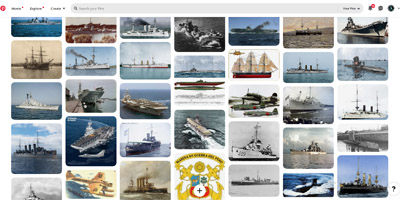

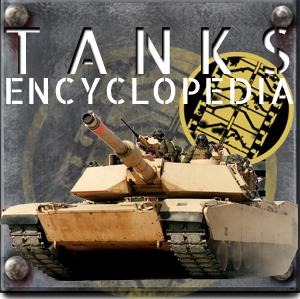
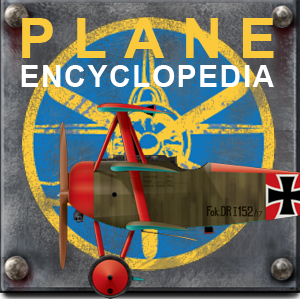
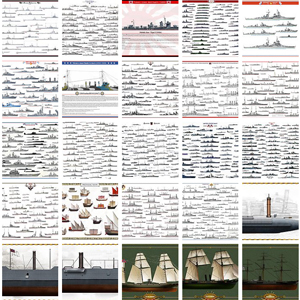
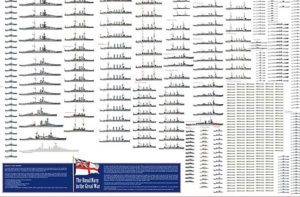
 French Navy
French Navy Royal Navy
Royal Navy Russian Navy
Russian Navy Armada Espanola
Armada Espanola Austrian Navy
Austrian Navy K.u.K. Kriegsmarine
K.u.K. Kriegsmarine Dansk Marine
Dansk Marine Nautiko Hellenon
Nautiko Hellenon Koninklije Marine 1870
Koninklije Marine 1870 Marinha do Brasil
Marinha do Brasil Osmanlı Donanması
Osmanlı Donanması Marina Do Peru
Marina Do Peru Marinha do Portugal
Marinha do Portugal Regia Marina 1870
Regia Marina 1870 Nihhon Kaigun 1870
Nihhon Kaigun 1870 Preußische Marine 1870
Preußische Marine 1870 Russkiy Flot 1870
Russkiy Flot 1870 Svenska marinen
Svenska marinen Søværnet
Søværnet Union Navy
Union Navy Confederate Navy
Confederate Navy Armada de Argentina
Armada de Argentina Imperial Chinese Navy
Imperial Chinese Navy Marinha do Portugal
Marinha do Portugal Mexico
Mexico Kaiserliche Marine
Kaiserliche Marine 1898 US Navy
1898 US Navy Sovietskiy Flot
Sovietskiy Flot Royal Canadian Navy
Royal Canadian Navy Royal Australian Navy
Royal Australian Navy RNZN Fleet
RNZN Fleet Chinese Navy 1937
Chinese Navy 1937 Kriegsmarine
Kriegsmarine Chilean Navy
Chilean Navy Danish Navy
Danish Navy Finnish Navy
Finnish Navy Hellenic Navy
Hellenic Navy Polish Navy
Polish Navy Romanian Navy
Romanian Navy Turkish Navy
Turkish Navy Royal Yugoslav Navy
Royal Yugoslav Navy Royal Thai Navy
Royal Thai Navy Minor Navies
Minor Navies Albania
Albania Austria
Austria Belgium
Belgium Columbia
Columbia Costa Rica
Costa Rica Cuba
Cuba Czechoslovakia
Czechoslovakia Dominican Republic
Dominican Republic Haiti
Haiti Hungary
Hungary Honduras
Honduras Estonia
Estonia Iceland
Iceland Eire
Eire Equador
Equador Iran
Iran Iraq
Iraq Latvia
Latvia Liberia
Liberia Lithuania
Lithuania Mandchukuo
Mandchukuo Morocco
Morocco Nicaragua
Nicaragua Persia
Persia San Salvador
San Salvador Sarawak
Sarawak Uruguay
Uruguay Venezuela
Venezuela Zanzibar
Zanzibar Warsaw Pact Navies
Warsaw Pact Navies Bulgaria
Bulgaria Hungary
Hungary

 Bundesmarine
Bundesmarine Dutch Navy
Dutch Navy Hellenic Navy
Hellenic Navy Marina Militare
Marina Militare Yugoslav Navy
Yugoslav Navy Chinese Navy
Chinese Navy Indian Navy
Indian Navy Indonesian Navy
Indonesian Navy JMSDF
JMSDF North Korean Navy
North Korean Navy Pakistani Navy
Pakistani Navy Philippines Navy
Philippines Navy ROKN
ROKN Rep. of Singapore Navy
Rep. of Singapore Navy Taiwanese Navy
Taiwanese Navy IDF Navy
IDF Navy Saudi Navy
Saudi Navy Royal New Zealand Navy
Royal New Zealand Navy Egyptian Navy
Egyptian Navy South African Navy
South African Navy






























 Ukrainian Navy
Ukrainian Navy dbodesign
dbodesign